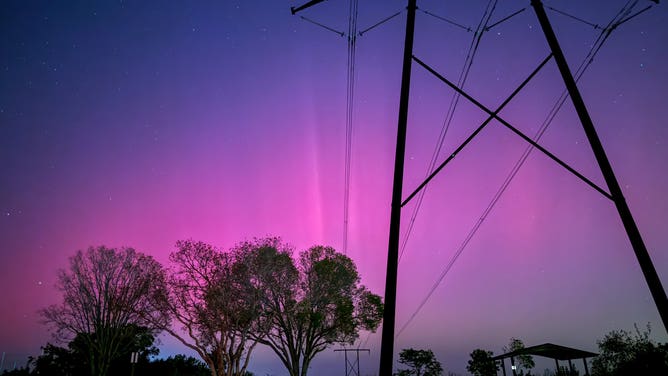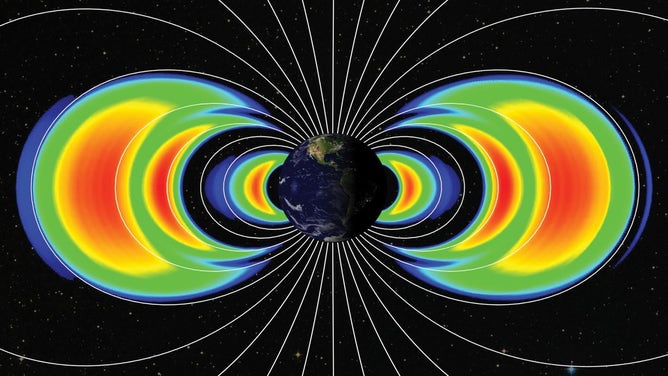Strongest solar storms in 20 years creates new radiation belts around Earth
During unusually strong solar storms, a temporary third belt can form between the two permanent Van Allen Belts. May's solar storms were the strongest in 20 years producing Northern Lights as far south as Florida.
NOAA issues 'severe' Geomagnetic Storm Watch
MAY FILE VIDEO: A "severe" geomagnetic storm is now in progress, according to NOAA's Space Weather Prediction Center, raising hopes for a dazzling display of the Northern Lights on Friday night while also putting infrastructure operators on guard for potential electrical effects from the solar event.
This year's historic solar storms, which created beautiful displays of Northern Lights around the globe, also made more lasting changes to Earth's magnetic field in the form of additional radiation belts, according to new data from a tiny NASA satellite.
May's space weather event, created by powerful blasts of energized particles from the Sun, was the strongest in 20 years. Coronal mass ejections (CME) associated with solar flares sent charged particles toward Earth, causing extreme geomagnetic storm conditions and vivid Aurora Borealis seen as far south as Florida.

The Northern Lights were seen in Fort Lauderdale, Florida, on Friday night, May 10, 2024.
(Luke Culver / FOX Weather)
NASA's Colorado Inner Radiation Belt Experiment (CIRBE) CubeSat recently found evidence of two new radiation belts within the Van Allen Belts. There are two permanent main belts: one made up of the trapped high-energy radiation particles from the Sun and the second from interactions of cosmic rays with Earth. According to NASA, during unusually strong solar storms, a temporary third belt can form between the two permanent ones.

A graphic and image showing the giant, donut-shaped rings of particles called the Van Allen Belts surrounding Earth and the additional temporary belts added after May's solar storm.
(NASA)
Scientists say these new belts formed after May’s geomagnetic storms could last months or even years. The CIRBE team continues to study the data to understand the latest addition better and how long it might last.
LARGEST X-CLASS SOLAR FLARE OF PAST SEVERAL YEARS EXPLODES FROM SUN
Between May 10 and May 15, several active sunspot regions released multiple X-class solar flares. An X flare is the most intense, and the number represents its strength. While the Sun frequently produces these bursts of energy, flares of this magnitude are rare.
On May 14, NASA satellites witnessed an X8.7 flare blasting out of the active sunspot region, the largest solar flare of the 11-year solar cycle.
More space weather ahead
The Sun is approaching solar maximum, culminating in more sunspots, the regions responsible for the powerful Northern lights we saw earlier this year.

Active sunspot regions seen on NASA's SDO satellite on Aug. 1, 2024.
(NASA)
WHAT IS THE 11-YEAR SOLAR CYCLE
This week, NOAA’s Space Weather Prediction Center issued Geomagnetic Storm Watches due to CMEs with Earth-directed components capable of producing strong solar storm impacts, including the Northern Lights farther away from the North Pole.
Space weather forecasters continue to monitor 12 different sunspot regions with a history of producing solar flares. Current forecasts show the potential for strong solar flares this weekend.
